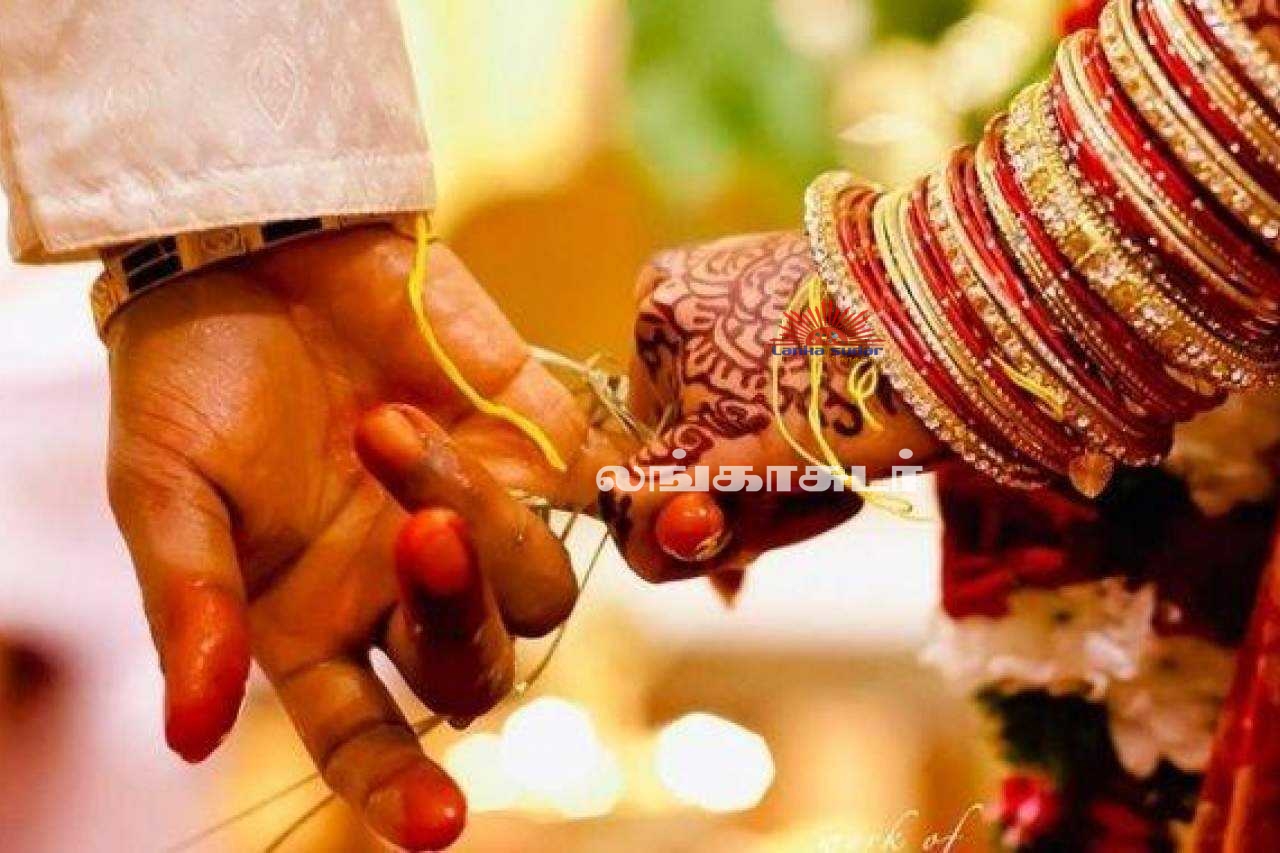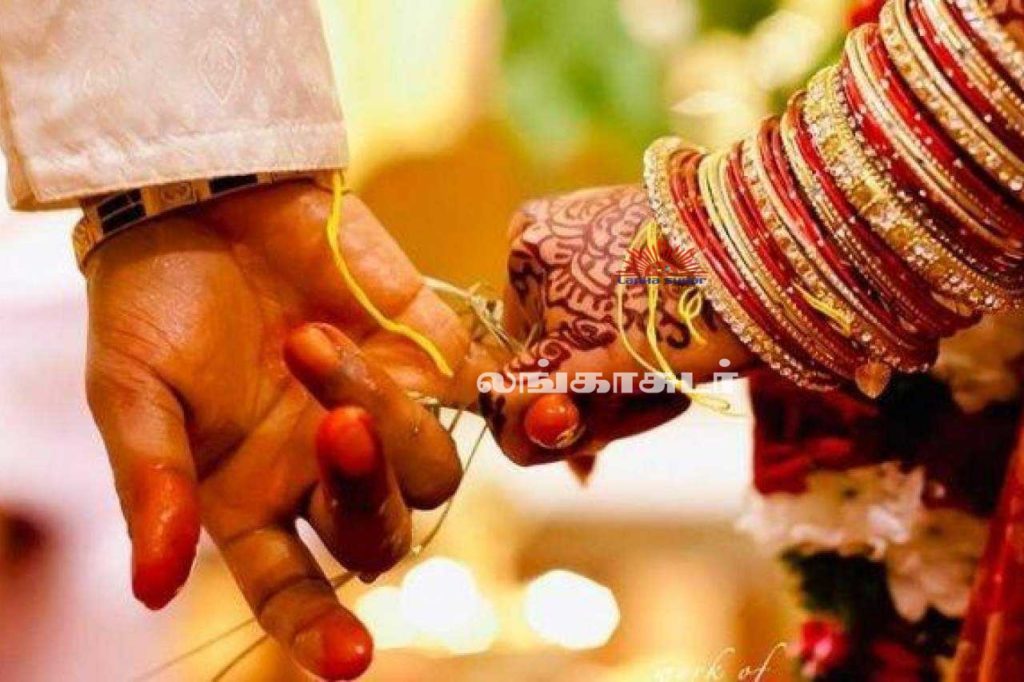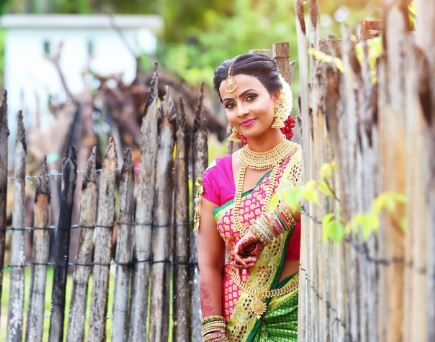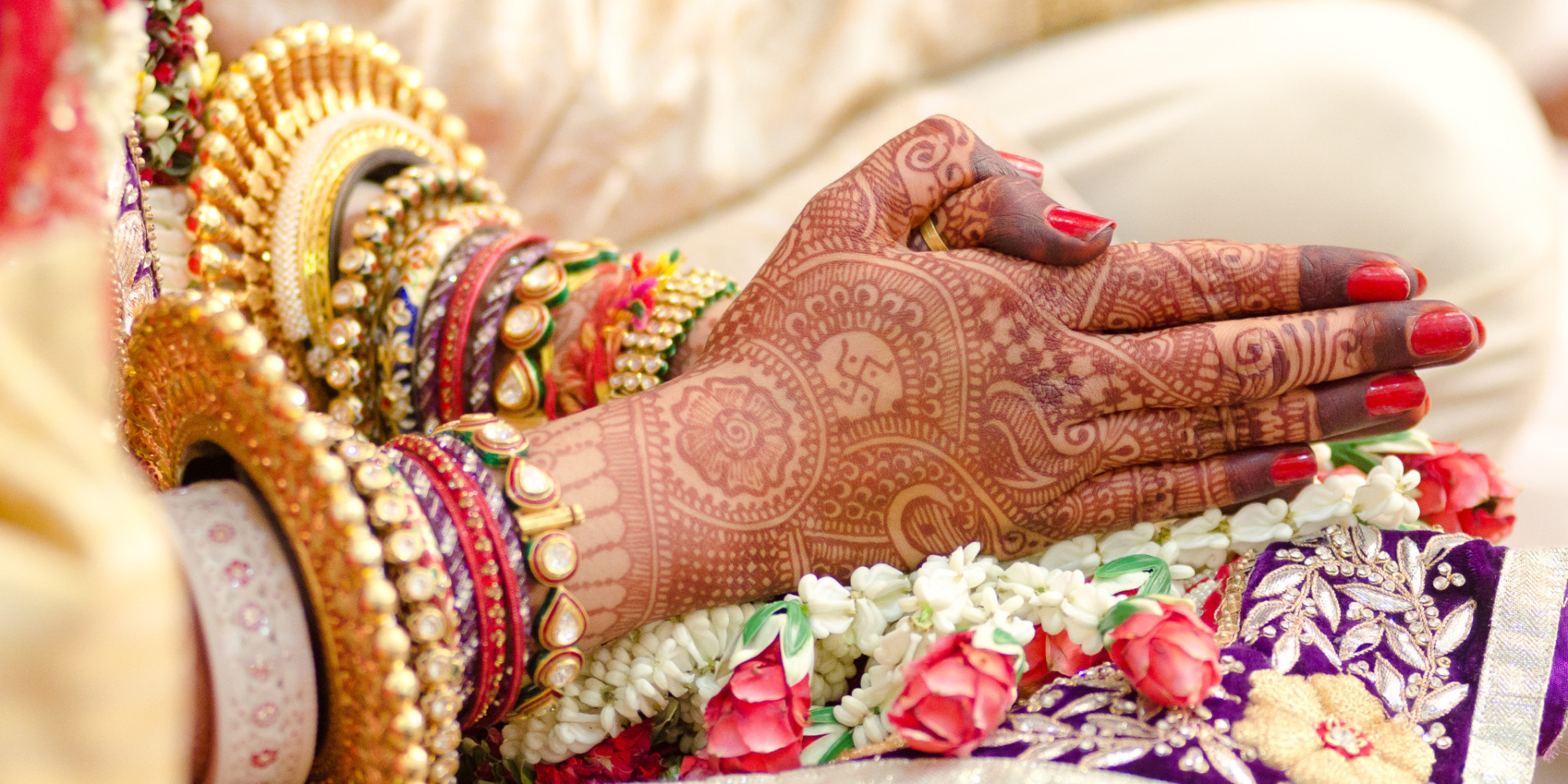இலங்கையில் திருமணம் செய்ய இருப்போருக்கு முக்கிய அறிவிப்பு
இலங்கையில் திருமணம் செய்வதற்கு காத்திருப்போருக்கு சுகாதார அமைச்சு சுகாதார பரிந்துரைகளை வெளியிட்டுள்ளது.
அதற்கமைய திருமண தம்பதிகள் மற்றும் உறவினர் ஒருவரை கட்டிப்பிடித்தல், முத்தம் கொடுத்தல் மற்றும் கைகுலுக்கி கொள்வதனை தவிர்த்து வேறு முறையை பயன்படுத்துமாறு அறிவுறுத்தப்பட்டுள்ளது.கொரோனா வைரஸ் தொற்று பரவ ஆரம்பிப்பதற்கு முன்னர் திருமண ஏற்பாடுகள் செய்து தடைப்பட்டவர்கள் மீண்டும் திருமணங்களை நடத்த முடியும். எனினும் அழைக்கப்பட்ட விருந்தினர்களின் பாதி பேர் மாத்திரமே மண்டபத்திற்குள் அனுமதிக்கப்படுவார்கள் என சுகாதார அமைச்சின் பிரதி இயக்குனர் நாயகம் லக்ஷ்மன் கம்லத் தெரிவித்துள்ளார்.மண்டபத்திற்குள் வருபவர்கள் முக கவசங்களை அணிய வேண்டும். ஒரு மீற்றர் தூர இடைவெளியை கடைபிடிக்க வேண்டும். மண்டபத்திற்குள் நுழைவற்கு முன்னர் அனைவரையும் பரிசோதிக்க வேண்டும்.
மண்டபத்திற்குள் நுழையும் இடத்தில் நீர் வழங்குவதற்கான கருவிகளை பொருத்த வேண்டும். மண்டபத்திற்கு வருவதற்கு முன்னரும், மண்டபத்தில் இருந்து வெளியேரும் போதும் அனைத்து உபகரணங்களையும் தூய்மைப்படுத்த வேண்டும்.நீர் பருகும் மற்றும் உணவு உண்ணும் தட்டுகள் விருந்தினர்களும் குடும்பத்தினரும் பயன்படுத்த கூடாது. உணவு பகிர்வதற்காக தனியாக ஒரு ஊழியரை நியமிக்க வேண்டும்.
அதன் மூலம் பலர் ஒரு தட்டுகள் பயன்படுத்துவதனை தவிர்க்க முடியும். ஒரு குழுவாக இணைந்து புகைப்படம் எடுத்துக் கொள்வதற்கும் தடை விதித்தல் ஆகிய பரிந்துரைகளை சுகாதார அமைச்சு வெளியிட்டுள்ளது.
Source: Lankasudar
Image: Lankasudar
A Brief History of Mandalas
If ever you’ve studied spiritual Asian art, you’ve likely encountered a mandala. A mandala, which is Sanskrit for “circle” or “discoid object,” is a geometric design that holds a great deal of symbolism in Hindu and Buddhist cultures. Mandalas are believed to represent different aspects of the universe and are used as instruments of meditation and symbols of prayer most notably in China, Japan, and Tibet.
In their most basic form, mandalas are circles contained within a square and arranged into sections that are all organized around a single, central point. They’re typically produced on paper or cloth, drawn on a surface with threads, fashioned in bronze, or built in stone. While extraordinary as a standalone work of art, mandalas hold symbolic and meditative meaning beyond their vibrant appearance.
What is a Mandala?
A mandala is a spiritual and ritual symbol in Asian cultures. It can be understood in two different ways: externally as a visual representation of the universe or internally as a guide for several practices that take place in many Asian traditions, including meditation. In Hinduism and Buddhism, the belief is that by entering the mandala and proceeding towards its center, you are guided through the cosmic process of transforming the universe from one of suffering into one of joy and happiness.

Tibetan Mandala. Sold for €320,000 via Sotheby’s (December 2018).
A Brief History of Mandalas
Siddhartha Gautama, the founder of Buddhism, was born in the region now known as Nepal. Though there is no confirmed date of his birth, historians believe it to be around 560 B.C. It is understood that Gautama left his kingdom after becoming aware of human suffering, where he sought to attain enlightenment through meditation and thoughtful action. He began to preach his philosophy across parts of India, where he gained devout followers and eventually established the first sangha, Buddhist community of monks.
As these Buddhist monks travelled the Silk Road, an ancient network of trade routes that connected the East and West, they brought Buddhism to other lands. They carried mandalas with them and brought the practice of painting these spiritual compositions to other parts of Asia, appearing in regions such as Tibet, China, and Japan by the 4th century. Though rooted in Buddhism, mandalas soon became present in Hinduism and other religious practices. Painters of the spiritual craft were often pious laymen, who were commissioned by a patron. They worked seated on the floor with a painting propped in their laps or in front of their crossed legs.
Types of Mandalas
There are various types of mandalas found in different cultures and used for a multitude of purposes, both artistically and spiritually. Below are three main types of mandalas and how they are used.
1. Teaching Mandala
Teaching mandalas are symbolic, and each shape, line, and colour represents a different aspect of a philosophical or religious system. The student creates his or her own mandala based on principles of design and construction, projecting a visual symbolization of everything they have learned. Teaching mandalas serve as colorful, mental maps for their creators.
2. Healing Mandala
Healing mandalas are more intuitive than teaching mandalas, and they are made for the purpose of meditation. Healing mandalas are intended to deliver wisdom, evoke feelings of calm, and channel focus and concentration.
3. Sand Mandala
Buddhist monks and Navajo cultures have long used sand mandalas as a traditional, religious element. These intricate designs use a variety of symbols made from colored sand that represent the impermanence of human life.
Symbolism in Mandalas

Chakrasamvara mandala. Sold for $4,750 via Bonhams (June 2016).
Within their intricate circular patterns, you can find common symbols throughout mandalas. Traditionally, they include the presence of Buddha’s mind in an abstract form, most commonly represented as a wheel, tree, flower, or jewel. The center is a dot, which is a symbol considered free of dimensions. It is interpreted as the starting point, the beginning of contemplation, and devotion to the divine. From there, the dot is surrounded by lines and geometrical patterns that symbolize the universe, encompassed by the outer circle which represents the cyclical nature of life. Some common symbols within the mandala include:
- Wheel with eight spokes: The circular nature of a wheel works as an artistic representation of a perfect universe. The eight spokes represent the Eightfold Path of Buddhism, a summary of practices that lead to liberation and rebirth.
- Bell: Bells represent an openness and emptying of the mind to allow the entrance of wisdom and clarity.
- Triangle: When facing upward, triangles represent action and energy, and when facing downward, they represent creativity and the pursuit of knowledge.
- Lotus flower: A sacred symbol in Buddhism, the symmetry of a lotus depicts balance. As a lotus reaches up from underwater into the light, so too does a human reaching for spiritual awakening and enlightenment.
- Sun: A popular basis for modern mandala patterns, suns tend to represent the universe, often carrying meanings related to life and energy.
How Mandalas Are Used
Mandalas are used for a variety of religious traditions, meditation, and modern contexts. The traditional Tibetan mandala, found in Buddhism, depicts the enlightened state of Buddha through sand art. Patterns are formed on the ground using metal and a small tube to create the exact texture and organization of the grains. Creating this can take weeks, and shortly after it’s complete, it is destroyed to align with the Buddhist belief that nothing is permanent.

Buddhist monk making a sand mandala.
As it relates to modern context, mandalas are used in a variety of ways. In yoga, mandalas represent the same ancient ideals; signifying a sacred space to shut away external influences. Often, mandalas are positioned around the studio and sometimes even drawn during meditation periods. Similarly, mandala art is used in healing circles, a practice that derives from Native Americans. The circles are often associated with the restoration of the body, mind, and heart.
Mandalas have also been found in dream catchers as a means to protect the individual sleeping. A popular item in Western cultures, you can easily identify the shape and patterns of a mandala within most dream catchers.
A spiritual symbol in Asian art, mandalas have since become a popular, meditative element for a variety of different cultures. In Hindu and Buddhist cultures in particular, mandalas serve as a representation of the universe and a guide on the path to enlightenment. We’ve since seen the geometric design appear in yoga studios, dream catchers, healing circles, and other meditative practices. The habit of creating and collecting mandalas is a transformative practice that is intended to restore inner peace and wisdom within.
Sources: Ancient History Encyclopedia | Britannica | My Modern Met | Study | Craftsy
Jaffna Tamil Wedding Customs
Wedding customs among Jaffna Tamils
In the past, before the advent of European rule in Jaffna, weddings were fully based on local custom. However, later with western influence, the legal registration of marriage has become an important part of weddings. Generally, this registration ceremony is fixed before the traditional wedding. This event usually takes place in the Bride’s house. The bride wears a traditional costume. This includes silk sari and different types of gold jewellery. They also change their rings in front of the registrar in western style and put their signature on the marriage document. Relatives and close friends are invited for this ceremony and a lunch or dinner is arranged there in a traditional way to those who attend the function.
Preparation of the Venue for Wedding
In Jaffna the wedding ceremony takes place either at the bride’s house or at a Temple. In the recent past wedding halls have been constructed within many temple complexes. A few decades ago, arranging weddings at the home was regarded as more respectable. Large temporary sheds are built in front of the house to accommodate the people who attend the wedding ceremony. This interior of the sheds are clad with white cloth and decorated with flowers, garlands, tender coconut palm leaves, colored papers and other materials. A decorative wedding seat is made within this structure. This seat is generally made by assembling readymade components made out of wood, velvet cloth, other brightly colored fabrics, glass beads with glittery coatings etc.
At the entrance to the house compound plantain trees are erected on both sides with the bunch of fruits. Here, on a table Niraikudam, which literally means “full pot”, is placed with traditional lamps and other auspicious items. This “full pot” is regarded as a symbol of prosperity as well as an invitation.
“Thaali” the Nuptial Cord and the Gold Melting Ceremony “Ponnurukku”
The most important item in a Hindu marriage in Jaffna as well as in South India is a nuptial cord called Thaali. During the wedding the bridegroom tie this cord with three knots on the bride’s neck. This is the climax of the wedding ceremony and in the past ladies never remove the “Thaali” from their neck when their husband is alive and they give great respect to this thaali. In fact Thaali proper is a small pendant attached to the cord.
A few days before the wedding day, a small ceremony with a small gathering of very close relatives is held at the groom’s house. This is arranged for melting the gold for making the thaali. The Gold smith, who was commissioned to make the thaali, performs the ceremonial melting. The groom would sit in front of the gold smith during this melting process. If the gold melts and hardens to a uniform round shape piece, it is regarded as a good sign. The Gold smith will use this gold for making thaali.
Climax of the Jaffna Hindu wedding, tying the “”Thaali”, the nuptial cord on the bride’s neck.
Ceremony
This wedding ceremony is held in traditional style. The Bride, Bridegroom and the visitors wear traditional dresses. During the wedding ceremony one of the bride’s brother usually a younger one would act as groom’s companion. He would also wear a costume similar to the groom’s one. He goes to the bridegrooms house with his relatives and accompanies the groom to the venue of the wedding. A Hindu priest officiates the wedding ceremony. Various elements and activities of this ceremony are highly symbolic and it is not appropriate to explain everything here.
The priest would sit in front of the ceremonial wedding seat and he creates a small fire there. The ceremony takes place in front of it. When people refer to weddings they say that the the symbol of the Fire witnessed these. First the groom comes and sits on the seat. The priest performs certain rituals. After this the bride is brought to the seat by her companion usually one of the groom’s sisters. She sits on the right side of the groom. A new silk sari known as the “Koorai” is presented to the bride and she goes back and changes her dress and comes back again dressed in the “Koorai” saree. The rituals would continue and as a climax the groom ties the nuptial cord on the neck of the bride. At this point she becomes the wife of the man and switches their places so that the bride sits on the left side of the groom. As per Hindu tradition the one’s wife sit on her husband’s left side. During the wedding ceremony the traditional “Nadhaswaram” music is played.
At the end, those who attended the wedding greet the couple by spraying rice mixed with some other auspicious things on their heads. After the ceremony is over lunch or dinner is served for the guests on plantain leaves on the floor.
Source: Tamil Culture Waterloo
Photo credits: JK Dreams Studio
Elegant wedding invitations: Seasons Finest Collection in Stores!
Anyone can cook up the whole narration of a wedding by simply looking at the invitation cards as they are the first and foremost expression of the wedding style and couple’s taste. Hence, selecting the most elegant wedding invitations is the most important wedding activities. While doing this, you have to consider your taste, pocket, design, quality, personalization and above all the guest’s mind set. Gosh! All this seems so difficult, right? Well no more, we are here to help you with ‘IndianWeddingCards’ exclusive collection of wedding invitations that too at up to 30% off. Yes, we you read that right. Not only this, we will give you some mind-boggling tips and tricks that will help you to find the perfect invitation suite for your wedding.
Buying the whole wedding stationery suite in one go is pretty much the trend today but, compromising on the quality and design is not. So, what are we supposed to do? First of all make up your mind what kind of invitation do you want for your wedding and in what is your budget. If you want to match your card with your wedding theme, you have to either go with the color, pattern or design. However, one of our most favorite cards is lace wedding cards as they are completely chic and contemporary. With contrasting lace along with elegant watercolor flowers design and glided stem design they are perfect to add the right amount of drama in your wedding. We feel that these lace wedding cards are perfect for casual weddings.
Christmas Inspired Wedding Ideas For Your Winter Wedding!
Christmas is the most awesome time of the year – for a winter wedding! This is the time when everyone is in the mood of celebration, then why not celebrate your nuptials too? Everyone loves Christmas Theme Wedding; me too, not you? Let’s get into the festive spirit with the amazing tips for a Christmas wedding.
Christmas Colors
If you want to follow the tradition, then Red & Green is the perfect colour scheme. You can also look something different like berry shades such as deep red and purple interspersed with winter whites. It’s a stylish option for a Christmas wedding that feels luxurious and festive.




